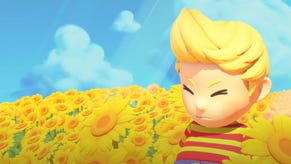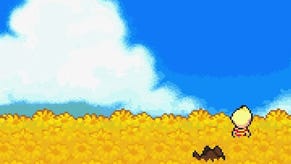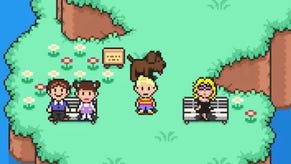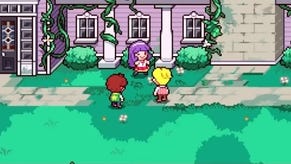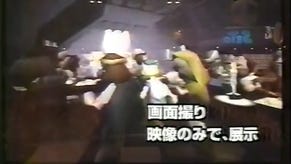Mother 3
Found in translation.
Few pregnancies have been as painful and protracted as Mother 3's. The follow-up to Super Nintendo classic Earthbound, a game that won a dedicated following for its cute and funny modern-world styling of the Japanese RPG, was first announced twelve years ago. Numerous false starts and broken promises later, lead designer Shigesato Itoi finally announced its imminent Japanese release for the Game Boy Advance on his blog in 2005.
As the latest instalment in one of Japan's most beloved RPG series, Mother 3 raced to the top of the pre-order charts before enjoying considerable success at retail, a feat that still failed to secure it a Western release. Despite Earthbound's status as a sacred cow amongst gaming's cognoscenti, it sold poorly, a performance that scuppered this sequel's chances for a Western release. Shigeru Miyamoto himself said of the game: "We had high hopes for Earthbound in the US, but it didn't do well. You might not know this, but there was a 'Please Make Mother 3' petition, which received 30,000 signatures! After that, we thought, 'Wow... Earthbound fans are really solid.'"
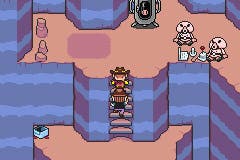
"Really solid" is understatement when it comes to Mother's followers, whose dedication often beggars belief. So when Nintendo's localisation producer Nate Bihldorff confirmed in an interview that the publisher had no plans to take Mother 3 outside of Japan, it was no surprise that a group of fan translators sprang into action. Extracting the text files from the Japanese GBA game, the team began the painstaking work of translating the game's thousands of lines of dialogue before reinserting them using the Earthbound English language font. Finally, on 17th October, over two years after the group began its work, a fully translated patch was released onto the Internet, freely available for anyone with a digital copy of the game to play via emulator.
The release occupies a grey legal area, dipping its toes into murky litigious water, but the fan localisers' motives are transparently pure. At start-up a message urges players to support Mother 3 by importing official merchandise and, should the game ever receive a Western release, purchasing a legitimate copy at that time.
Of course, motives alone don't maketh the translation. The process of translating a JRPG is time-consuming, a labour that's all too often handled poorly by the professionals, so the fact that a group of fans should produce a script of such wit and vim is startling. It's also something they simply had to get right if they were to do this, of all games, justice, because Mother 3 is a game that fits the term 'interactive story' more comfortably than most. It's a game made by a storyteller, one who's chosen to use the vocabulary and tropes of the JRPG to bring his tale to an audience.
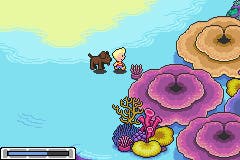
As such, the gameplay's not so much a set of lines to link the drama as a clutch of dots, short interactive hops from cut-scene to cut-scene, employing what appears to be the most basic form and function of its chosen genre. What initially appears to be a straightforward tale told in primary colours soon demonstrates a breadth and depth of quality that few titles many times its budget achieve. Its childlike sprites (unusually Western in appearance) communicate comedy and tragedy with unexpected impact, the simple story drawing readers in with a nod and wink before turning on a sixpence to deliver affecting scenes.
To begin with, you name each member of the central protagonist's family, from the father down to the dog, and it's a mammoth undertaking if you're anything like us. If that isn't enough, you then answer a series of questions, the answers to which are then incorporated into the story. These take the form of "What is your favourite food?" and "What is your favourite thing?" It's the simplest of tricks, an obvious way for a game to tailor itself to the player, but it's still effective when tragedy and triumph befalls your characters later in the game and the customisation becomes relevant.



